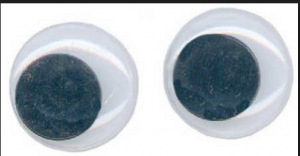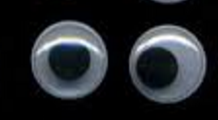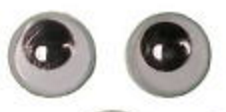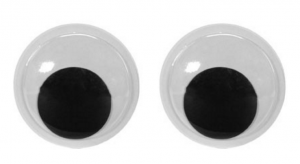- CN VI causes contraction of the lateral rectus muscle, allowing the eye to abduct. An abducens palsy will present with impairment of lateral gaze of the affected eye.
- Causes of an Abducens palsy include:
- Vasculopathic (DM, HTN)
- Traumatic
- Meningeal or parameningeal infections
- Idiopathic
- Giant cell arteritis
- Brainstem lesions (most often MS in young adults)
- Cavernous sinus lesion/neoplasm
- Cavernous sinus thrombosis
 Oculomotor (CN III) Nerve Palsy
Oculomotor (CN III) Nerve Palsy
- CN III innervates the superior, inferior, and medial rectus muscles as well as the inferior oblique muscle, allowing for adduction, elevation and depression of the eye. CN III also causes pupillary constriction ia parasympathetic fibers supplying the ciliary body and sphincter of the iris. An oculomotor palsy will present with a “down and out” appearance with associated ptosis and pupillary dilation.
- Causes of an oculomotor nerve palsy include:
- SAH 2/2 aneurysmal rupture or compression from a large aneurysm
- Vasculopathic (DM – most common subset of 3rd nerve palsies)
- Traumatic
- Ophthalmoplegic migraine
- Midbrain lesions
- Cavernous sins thrombosis
- Meningeal or parameningeal infections
- Neoplastic
- Gaze palsies (affecting both eyes) are most often upgaze palsies although downgaze palsies can less commonly occur.
- Vertical palsies develop most commonly occur due to lesions of the rostral midbrain nuclei.
- Causes of Vertical gaze palsies include:
- Rostral brainstem ischemia and “top of the basilar” syndrome (occlusion of rostral part of basilar artery) and can present with upgaze and/or downgaze palsies
- Thalamic hemorrhage
- Progressive supranuclear palsy
- Paraneoplastic
- Parinaud’s syndrome (midbrain lesions due to brain tumors such as pinealoma, multiple sclerosis, or other midbrain infarcts)
Mohsen A, Hossein A. The Six Syndromes of the Sixth Cranial Nerve. Journal of Ophthalmic & Vision Research. 2013;8(2):160-171.
Chugh JP, Jain P, Chouhan RS, Rathi A. Third Nerve Palsy: An Overview. Indian Journal of Clinical Practice 2012(22):17-20.
Moss, HE. Vertical gaze palsy. In: MedLink Neurology. (Accessed on February 11, 2016.)



